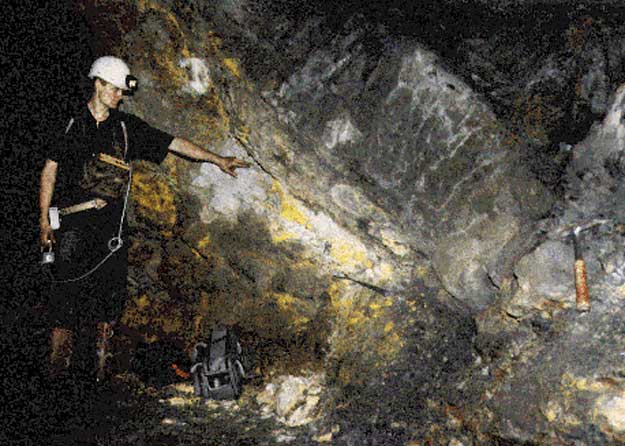@Alienpenis Auf solche Erklärungen bin ich beim googlen auch andauernd gestoßen. Aber wie ist es zum ersten Punkt gekommen?
 Alienpenis schrieb:* eine hohe Urankonzentration mit einem genügend großen Anteil an U-235 vorliegen,
Alienpenis schrieb:* eine hohe Urankonzentration mit einem genügend großen Anteil an U-235 vorliegen,
Da habe ich bisher noch keinen natürlichen Prozess gefunden, der zu so einer hohen Urankonzentration geführt hat.
 stuelpner schrieb:Was ist denn deine Vermutung?
stuelpner schrieb:Was ist denn deine Vermutung?
Irgendwo gibt es hier einen Thread in dem gefragt wird warum wir unseren Atommüll nicht ins All schießen. Vielleicht gab es vor Mrd von Jahren eine Zivilisation in unserem Sonnensystem die ihren Atommüll auf der Erde entsorgt haben.
Selbst die NASA hat sich schon mit Oklo beschäftigt:
"Astronomy Picture of the Day
2005 February 20

Oklo: Ancient African Nuclear Reactors
Credit & Copyright: Robert D. Loss, CEMS
Explanation: The remnants of nuclear reactors nearly two billion years old were found in the 1970s in Africa. These reactors are thought to have occurred naturally. No natural reactors exist today, as the relative density of fissile uranium has now decayed below that needed for a sustainable reaction. Pictured above is Fossil Reactor 15, located in Oklo, Gabon. Uranium oxide remains are visible as the yellowish rock. Oklo by-products are being used today to probe the stability of the fundamental constants over cosmological time-scales and to develop more effective means for disposing of human-manufactured nuclear waste."
Die gelben Flecken sind das Uranoxyd, was wir heute als yellowcake bezeichnen.








